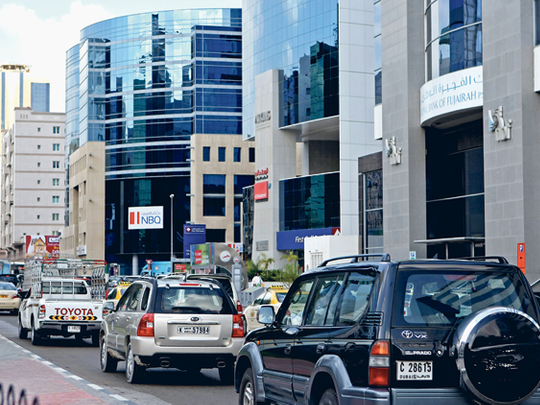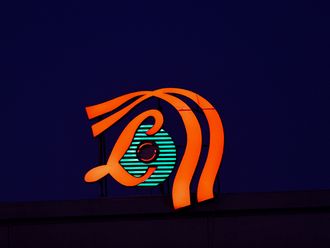
Dubai : Despite being cushioned from the full impact of the economic crisis, the Gulf's banking sector saw its worst fiscal year in 2009.
Imprudent asset management, the unpredictable global downturn (although there were black swans warning of impending stress) and bad investments in speculative markets, combined with abundant over-leveraging, were some of the reasons for the setbacks suffered by regional banks.
The banking sector reported an 8.56 per cent decline in net profits in 2009 to $14.40 billion (Dh52.88 billion) against $15.75 billion in 2008, said a report by Global Investment House, a Kuwaiti investment bank.
Kuwait saw the only increase in net profits in the region, at 70 per cent, while Bahrain's banking sector posted the biggest decline, 35.23 per cent.
Last year when Saad and Algosaibi defaulted on payments, the Saudi Arabian family businesses caused waves of worry for regional banks that had invested in the groups.
The central bank said late last year that UAE banks' exposure to the Saad and Algosaibi Group was about $3 billion.
While 2009 provisioning for those loans was encouraged by the central bank, it said that additional provisioning would probably be necessary this year. The bank said that 13 local banks and seven foreign banks operating in the UAE were affected.
Earnings
Shuaa Capital, the UAE's largest investment bank, said in its report UAE Vision 2010, that estimated bank net earnings would fall 15 per cent in 2009 and only recover by eight to ten per cent in 2010.
"Following the past year's challenges, we expect 2010 to remain a difficult phase for UAE banks as the economic recovery that we are expecting does not mean the end of the regional liquidity shortage, nor the improvement of asset quality metrics," it said.
Aside from Kuwaiti and Bahraini bank's positions, the other countries' banks fared better than they would have had it not been for government intervention and liquidity injection.
The Abu Dhabi government last year took matters in its own hands as it injected $4.36 billion into five banks to strengthen their position in the middle of the crisis.
Meanwhile, the Qatari government stepped in by buying portfolios of listed shares and real estate in banks worth R30 billion to 50 billion riyals.
Profits squeezed
"GCC bank profits were squeezed in 2009 due to deteriorating asset quality and slowing business volume growth," said Rahul Shah, banking analyst at Deutsche Bank.
The UAE banking sector reported a decline of 19.18 per cent in net profit in 2009, falling to $3.8 billion from $4.7 billion in 2008, affected by the Saad and Algosaibi defaults, Global's report said.
Meanwhile, the banking sector in the Abu Dhabi stock exchange reported a net income of $2.95 billion for 2009 compared to $3.47 billion in 2008, a decrease of 14.96 per cent. Out of 14 listed banks, eight reported growth in 2009 net profits and four banks reported declines.
Looking at the results of the three biggest banks by market capitalisation, National Bank of Abu Dhabi reported a marginal increase of 0.04 per cent in 2009 to $822.03 million compared to $821.70 million in 2008.
First Gulf Bank reported an increase of 10.14 per cent to $901 million in 2009 against $818.03 million in 2008, after suffering losses of $326.64 million in the fourth quarter of 2009.
The report said that the losses were mainly caused by provisions, which equalled $1 billion in 2009, including $544 million that was pushed from the last quarter of 2008.
Invest Bank reported high profits in 2009 compared to 2008, rising from $1.28 million to $78.53 million.
On the other hand, Abu Dhabi Islamic Bank reported the highest drop of 90.83 per cent in net profit in 2009 compared to 2008, to $21.24 million from $231.66 million, after considering provisions on credit worth $394.42 million.
National Bank of Fujairah reported net profits of $28.39 million compared to a loss of $13.69 million in 2008.
Abu Dhabi Commercial Bank reported a loss of $139.58 million in 2009, compared to a net profit of $369.78 million the previous year.
The banking sector in the Dubai Financial Market reported a net income of $854.06 million for 2009 compared to $1.24 billion in 2008, a decrease of 31.02 per cent.
Out of seven listed banks, excluding Ajman Bank and Arab Emirates Investment Bank which have not disclosed their full financial results yet, only one bank reported growth in 2009, which was Commercial Bank of Dubai with an increase of 4.15 per cent, from $209.87 million in 2008 to $218.58 million.
Four banks reported a decrease with Emirates Islamic Bank reporting the biggest fall of 67.35 per cent in 2009 compared with 2008, from $109.04 million in 2008 to $35.60 million.
The three heavyweights, mashreq, Emirates NBD and Dubai Islamic Bank also reported a decline in net profit at 39.10 per cent, 9.09 per cent and 30.65 per cent respectively.
Performance
The five largest banks of the region in market value all posted increases in net profits, demonstrating their ability to outperform the market even during a downturn.
Al Rajhi Bank, the biggest bank in the Gulf, reported an increase of 3.7 per cent in net profit to $1.8 billion in 2009, compared with $1.74 billion the year before.
"The reason behind this increase is attributed to the development of the investment banking business and diversifying its sources of income," Global said, adding the bank's profits were the highest among all banks in the Gulf region.
Samba Financial Group reported an increase of 2.4 per cent in 2009, from $1.19 billion in 2008 to $1.22 billion, which was shown in the fourth quarter with an increase of 1.1 per cent, $220 billion in 2008 to $223 billion in 2009.
The increase was due to the increase in operational revenues and a decrease in costs.
Qatar National Bank recorded a net income of $1.15 billion in 2009, up 15.04 per cent from $1.0 billion in 2008.
Riyad Bank reported an increase in net profit of 14.8 per cent in 2009 to $807.65 million compared to $703.43 million in 2008. Main banking activities represented in the credit portfolio reported an increase in net commissions, which was reflected in total net income.
Provisions
The net profit was $243 million in the fourth quarter of 2009, an increase of 72.4 per cent from the same period the previous year, and an increase of 20.1 per cent from the third quarter.
Net profit of National Bank of Kuwait increased 3.87 per cent in 2009 to $920.23 million.
"It is worth mentioning that the last quarter's results were 4.5 times compared to the same period last year to $221.5 million. This result was despite the provisions taken by the bank after the financial crisis," the report said.
Shuaa Capital expects aggregate customer deposits to grow by eight per cent in 2010, resulting in Dh84 billion worth of net liquidity addition for the year.
"In our view, this will be matched by a slower six per cent growth in lending as we expect banks to remain selective in their lending policies," it said.
Meanwhile, analyst Shah said that loan impairment charges should moderate in 2010, although they are likely to remain above mid-cycle levels.
"Activity growth is also likely to recover, although much will depend on a re-opening of the region's debt markets," he said.












